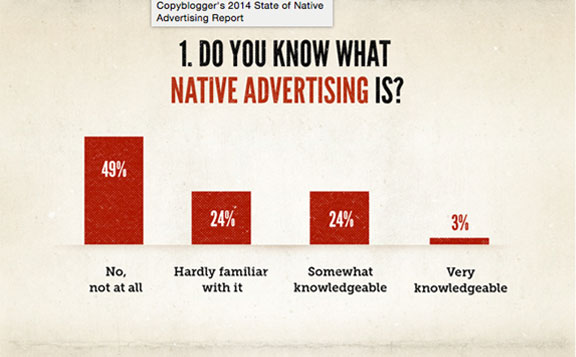Create Sponsored Posts that Perform
The key to returns on sponsored content is to do it well.
We all live in two worlds these days. There’s our real life and there’s our virtual life. There are our real friends and our blogger friends. There’s the guy who helps us at AutoZone and there’s the guy who does car tutorials on YouTube. Increasingly, the virtual world, and especially personal blogs, is gaining our trust and demonstrating its ability to harness consumer purchasing power.
Regardless of whether we visit blogs for escapism, hobbyist obsessions, or insider news and information, bloggers build relationships with us. As bloggers provide quality content post by post, they eventually become a valued source of information to readers. Though these relationships are virtual, they are often accorded a similar level of confidence as a real-life friend or acquaintance.
This point is important because of the wariness today’s consumers feel toward traditional marketing strategies. Brands need to find an already-vetted entry point through which to pitch themselves. For this reason, personal blogging platforms (positioned to readers as a well-connected friend) “may be the most effective, yet underexplored, space for content marketing.”
Sponsored blog posts fall under a content marketing subcategory called native advertising. If you don’t know what native advertising is, you’re not alone. Copyblogger conducted a 2014 survey on native advertising and found that (out of 2,088 respondents) even marketing professionals don’t have a clear grasp of this concept.
Native advertising is content advertising that looks and acts just like non-sponsored content and is displayed in the same way and on the same platform.

The above image is a well-known native advertising example in which a Scientology-sponsored ad looks like an article from The Atlantic (see the yellow highlighted text indicating Sponsor Content). The Atlantic was widely criticized for the advertorial, which led many readers to believe the publication endorsed the much-maligned “church.”
Sponsored blog posts are a form of native advertising, in that they look and act just like a regular blog post, with the stipulation that they contain wording to indicate their sponsored status.
The readers of sponsored blog posts are warm doors, already accustomed to bloggers recommending their favorite tried-and-true products. These posts, while paid advertisements, are akin to powerful, holy grail word-of-mouth advertising. As long as the product or service aligns with the blog’s established values, and as long as the blogger can sincerely recommend the product, sponsored posts are much like the recommendation of a friend.
This kind of advertising is mutually advantageous: Brands get an open customer, bloggers receive compensation to continue their work, and readers get the benefit of the new finds their “in-the-know” blog friends share with them.
Tips for Ensuring Your Sponsored Blog Post is Effective
Make sure the blogger is the right demographic and stage of life for your product or company. If a blogger’s kids are older and she/he is writing about baby products, it can come off as inauthentic.
You want a blogger to write about your product or service in his/her own voice, not using a pre-scripted formula. In the same vein, you want the blogger to actually have used and had a positive experience with what you are advertising. Readers can tell when a post seems to be “phoned in.”
Thoroughly review the blogger’s site to be sure the tone is complementary and that there aren’t too many sponsored posts already, which will turn readers off.
Specify points you want the blogger to hit (product or service details) in the post without dictating the opinion and finer points of the writing.
Ensure that the post is labeled as sponsored content to avoid losing credibility as you connect with readers.
How To Connect With Bloggers
- Often bloggers post contact information or their agency’s information on their sites.
- You can also use a service that will connect you with bloggers, here are some options:
Pricing
Personal blog sponsored posts may not have the reach of The Atlantic’s readership, but they are often at a much lower price point compared to placing content on a well-established media site. Pricing is not standardized and can be individually determined by a blogger or third-party facilitator. To get a general idea of what you should be paying, see pricing formulas here and here.
Examples
Blue Apron and Plated, new-ish dinner prep subscription companies, both relied heavily on sponsored blog posts with mommy bloggers and food bloggers to spread the word about their companies and widen customer bases.
As it always does, marketing evolves. And maybe at some point, clearer lines will be drawn between personal and commercial space for bloggers and advertisers to address some of the initial murmurings around sponsored content. For right now, though, sponsored blog posts are a genuine, authentic way to connect with consumers through a trusted source.
Have you had success with sponsored content?
Let Us Know in the Comments Section Below!







